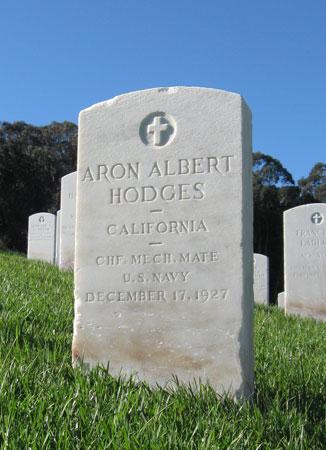
LOST AT SEA - SINKING OF USS S-4 (SS-109) - 12/17/1927
Submarine USS S-4 (SS-109) was built at Portsmouth Navy Yard and commissioned November 19, 1919. On December 17, 1927, USS S-4 conducted speed and maneuverability tests over a measured mile offshore from Provincetown, Massachusetts, and as she rose to the surface, she was inadvertently struck by USCGC Pauline which was returning to port from a search for rumrunners. The ship was doing 18-knots and when a lookout spotted a periscope he ordered “Hard astern! Full right rudder!” but it was too late, and USS S-4 was struck just ahead of the deck gun punching two large holes, in a ballast tank and penetrating the pressure hull into the battery compartment. Crewmembers tried to stuff clothing into the hole but were unsuccessful as USS S-4 settled 102 feet to the muddy bottom. Quickly six men sealed themselves into the forward torpedo room and the other crew members sealed themselves in two aft compartments. It soon became evident that USS S-4 could not reach the surface on its own and the men had to await rescue on the bottom.
Unfortunately, there was no rescue equipment nearby, and gale force winds and rough seas prevented a quick response. When rescuers were able to reach USS S-4 the following day they found air from the submarine to be 7% carbon-dioxide, too high for anyone to survive. Although the six men in the forward torpedo room had cleaner air and were able to survive for several days, all men in the aft compartments apparently died the day of the sinking. Because of the extremely foul weather, all rescue attempts were unsuccessful and the forty men aboard the submarine died. It took the Navy three months until March 1928 to finally raise USS S-4 and recover their bodies.
Machinist Mate Chief Aaron Albert Hodges was one of the men to die in an aft compartment. He was reportedly born November 5, 1886, in Cherokee City, Arkansas. Readily available historical public records report his father moved the family to Indian Territory in Oklahoma about 1899. Aaron married his first wife on August 27, 1906, in Wewoka, Oklahoma, and had two sons early in the marriage. Historical records are vague concerning Aaron during the period of the early 1900s, but he may have been in the merchant marine as records report he “made three trips around the World, and in World War One crossed the Atlantic nine times.” He was also reported to have been hired to serve aboard the ocean liner Titanic for its maiden voyage in April 1912 but missed the sailing as he was delayed three days in making connections to Southampton for the sailing. The date he joined the Navy is unknown, but he reportedly joined the crew of USS S-4 at the submarine’s home port of San Francisco and held the rate of Machinist Mate Chief. When USS S-4 was raised in March 1928, the remains of MMC Hodges were recovered from the engine compartment and it appeared he drowned rather than suffocated. Initial plans were for his burial at Arlington National Cemetery, but as he had divorced his wife, was scheduled to be remarried upon completion of his assignment in Massachusetts, and his fiancé lived in San Francisco, it was decided that he be buried there instead of Arlington.
The sinking of USS S-4 was a pivotal point in the history of submarine design, and the painful inability of the Navy to be able to rescue the crew became the basis for an effort to make submarine escape and salvage a viable option. Although they all died, the USS S-4 crew left a legacy that has resulted in saving an untold number of others because of the improved safety and navigation required after the USS S-4 accident.
NOTE: The majority of records concerning MMC Hodges furnish his name as Aaron Albert Hodges. However, some record furnish his name as Aron Albert Hodges as illustrated by his grave marker at the San Francisco National Cemetery in California as illustrated below.

Submitted by CDR Roy A. Mosteller, USNR (Ret)
